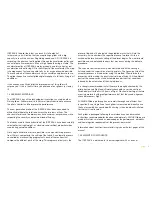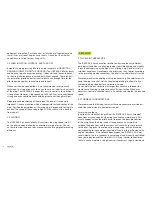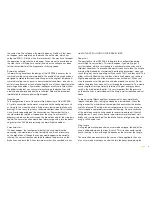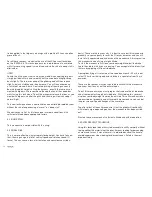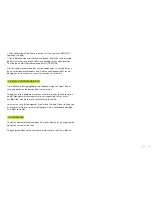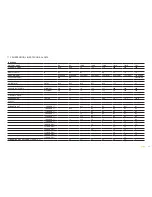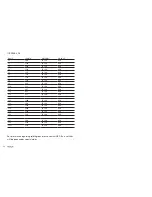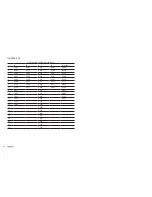
13
6. speCIal MeTHods
6.1 ToWING
The ICepeaK 8 does not experience any problem whilst being towed.
only qualified personnel should handle the qualified equipment to carry
out this operation. The wing has to be inflated in the same way as in
normal flight.
6.2 aCroBaTIC FlIGHT
although the ICepeaK 8 has been tested by expert acrobatic pilots in
extreme situations, it Has NoT been designed for acrobatic flight and
we do NoT reCoMMeNd THe Use oF THIs GlIder for that use. We
consider acrobatic flight to be any form of piloting that is different to
normal flight. To learn safely how to master acrobatic manoeuvres you
should attend lessons, which are carried out and supervised by a qualified
instructor over water. extreme manoeuvres take you and your wing to
centrifugal forces that can reach 4 to 5g.
Materials will wear more quickly than in normal flight. If you do practice
extreme manoeuvres we recommend that you submit your wing to a line
revision every six months.
7. FoldING INsTrUCTIoNs
In order to guarantee the correct preservation of the glider and to keep it
in perfect flying condition, we recommend using always an appropriate
folding method.
Folding should be carried out cell to cell (accordion style) with the sle ribs
remaining parallel to the leading edge at all times. The same technique
should then be applied to sTe ribs on the trailing edge and when complete
the cell structures along the entire chord of the wing should lay parallel and
neatly alongside each other.
The wing should then be folded into three sections of equal width with
each section stacked upon the other. In order to avoid placing undue stress
on the internal structures when packed, it is important that each section
is folded to the same length as the internal structure of the sle. several
smaller folds should be avoided.
8. Care aNd MaINTeNaNCe
8.1 MaINTeNaNCe
Careful maintenance of your equipment will ensure continued performance.
The fabric and the lines do not need to be washed, if they become dirty,
clean them with a soft damp cloth.
If your wing gets wet with salty water, immerse it in fresh water and dry it
away from direct sunlight. The sunlight may damage the materials of your
wing and cause premature aging. once you have landed, do not leave the
wing in the sun, store it properly.
If you use your wing in a sandy area, try to avoid the sand from entering
through the cell openings of the leading edge. If sand is inside the wing,
remove it before folding.
If it gets wet of sea water, you should submerge it into fresh water and let it
dry far away from the sun.
8.2 sToraGe
It is important that the wing is correctly folded when stored. store your
flying equipment in a cool, dry place away from solvents, fuels or oils. It is
not advisable to store your flying equipment in the trunk of your car.
Temperatures inside a car parked in the sunlight, can be very high. Inside
Summary of Contents for ICEPEAK 8
Page 1: ...USER S MANUAL ICEPEAK 8...
Page 22: ...22 11 8 FOLDING LINES PLAN...
Page 28: ...28 11 11 ATTACHMENT POINTS POSITION...
Page 29: ...29 11 12 TENSION BANDS...
Page 30: ...30 11 13 MINIRIBS...
Page 31: ...31 11 14 DIAGONALS...
Page 32: ...32 11 15 INLET SHAPE...
Page 33: ...33 12 CERTIFICATION SPECIMEN TEST ICEPEAK 8 22 ICEPEAK 8 24...
Page 34: ...34 ICEPEAK 8 26...





